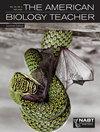非豆科植物的固氮作用
IF 0.3
4区 教育学
Q4 BIOLOGY
引用次数: 2
摘要
所有生物学专业的学生都学习豆类,包括与固氮根瘤细菌共生的豌豆、豆类和苜蓿等农业必需植物。但是,大多数生物学专业的学生从来没有了解过另一种数量丰富、分布广泛、也许同样重要的植物群,它们有着与豆科植物完全不同的固氮根瘤。这组非豆科固氮植物包括桤木和灌木(Alnus sp.),杨梅和甜风(Myrica sp.)和甜蕨(Comptonia peregrina)。尽管这些植物的富氮能力使它们成为生态系统的重要组成部分,对农民和林农可能非常有用,但它们在基础生物学或生态学教科书中很少被提及。我对所谓的固氮植物特别感兴趣,因为我研究的是能耐受贫瘠土壤的植被。这些植物在这样的土壤中具有优势,因为它们与可以将氮气转化或“固定”为铵的细菌相结合(表1)。植物在其根部发育的根瘤中蕴藏着细菌;细菌从植物中获得呼吸性碳底物,植物从细菌中获得含氨基酸的氮。在我所研究的栖息地——沙丘、烧焦的地方和东北部被侵蚀的土壤——生长的大多数固氮植物都不是豆科植物。但几年前,当我试图了解更多关于氮固定的知识时本文章由计算机程序翻译,如有差异,请以英文原文为准。
Nitrogen Fixation by Non-leguminous Plants
ALL STUDENTS OF BIOLOGY learn about legumes, including such agriculturally essential plants as peas, beans, and alfalfa that form a symbiosis with nitrogenfixing root nodule bacteria. But most biology students never learn about another abundant, widespread, and perhaps equally important group of plants that have nitrogen-fixing root nodules quite different from those of the legumes. This group of non-leguminous nitrogenfixing plants includes alder trees and shrubs (Alnus sp.), bayberry and sweet gale (Myrica sp.), and sweet-fern (Comptonia peregrina). These plants are rarely mentioned in basic biology or ecology texts, despite the fact that their nitrogen-enriching ability makes them important components of their ecosystems and potentially very useful to farmers and foresters. The so-called nitrogen-fixing plants are of special interest to me because I study vegetation tolerant of nutrient-poor soils. These plants have an advantage in such soils since they associate with bacteria that can convert or "fix" nitrogenous gas to ammonium (table 1). The plant harbors the bacteria in nodules that develop on its roots; the bacteria obtain respiratory carbon substrates from the plant, and the plant obtains nitrogen containing amino acids from the bacteria. Most of the nitrogen-fixing plants growing in the habitats I have been studying-sand dunes, burned sites, and eroded soils in the Northeast-are not legumes. But several years ago when I attempted to learn more about nitrogen fix-
求助全文
通过发布文献求助,成功后即可免费获取论文全文。
去求助
来源期刊

American Biology Teacher
BIOLOGY-EDUCATION, SCIENTIFIC DISCIPLINES
CiteScore
0.80
自引率
20.00%
发文量
108
期刊介绍:
The American Biology Teacher is an award winning and peer-refereed professional journal for K-16 biology teachers. Articles include topics such as modern biology content, biology teaching strategies for both the classroom and laboratory, field activities, and a wide range of assistance for application and professional development. Each issue features reviews of books, classroom technology products, and "Biology Today." Published 9 times a year, the journal also covers the social and ethical implications of biology and ways to incorporate such concerns into instructional programs.
 求助内容:
求助内容: 应助结果提醒方式:
应助结果提醒方式:


